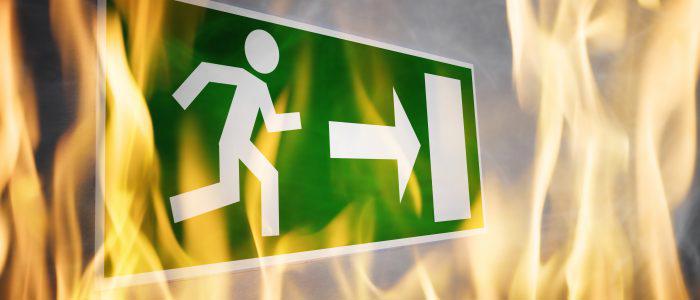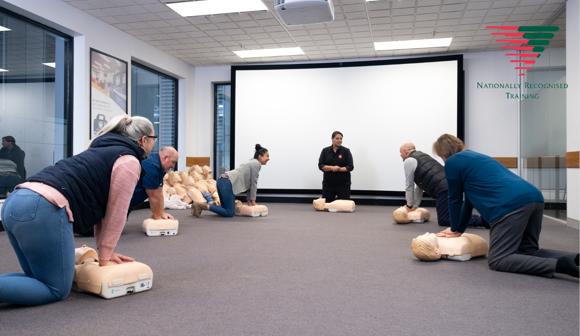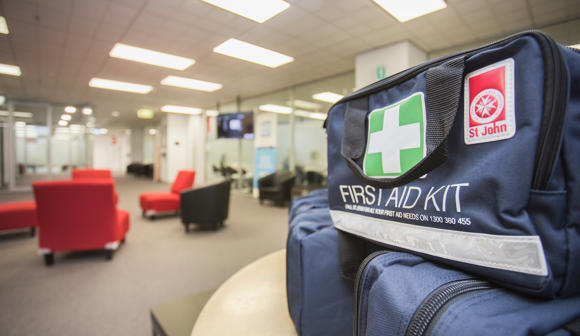Fire Safety – What to do in a Building Fire

Building fires can occur anywhere, at any time. This includes workplaces of all types, so it’s important that employers implement a Fire Safety procedure in the workplace and educate their employees in the correct Fire Safety procedures.
According to Fire and Safety Australia fewer than 50% of building inhabitants are confident to respond in a fire and know the correct evacuation route for a fire emergency. This includes fewer than 50% of people knowing how to confidently use a fire extinguisher. More so, fewer than 25% of people know the location of fire extinguishers in their building.

In the case of a fire, the level of danger can escalate rapidly so it is important all employees learn the correct Fire Safety procedures to avoid preventable injury or damage to the building.
Building Fires
In a building, once a fire is alight it can intensify very quickly due to the high amount of flammable objects and materials. A lot of furniture in the workplace and home contains synthetic materials which release toxic fumes when alight. The combination of smoke and toxic fumes in a fire can be overwhelming and hinder a person’s ability to receive enough oxygen and see clearly.
Fire in the workplace can be incredibly dangerous for those on site so it is imperative employers acknowledge their duty of care to employees, contractors and visitors. All employees should know the evacuation procedure and location of fire extinguishers without hesitation. As an employer, it is up to you to make the effort to ensure this information is available and instilled at the forefront of your employees’ minds.
This includes fire evacuation routes, which should be clearly identifiable and known to those who are frequenting the building. It is important there are multiple exit routes installed in case of any blockages in an emergency.
The recent Grenfell Tower tragedy saw many lives lost due to the lack of exit points available. The catastrophic blaze is a sad reminder to all that fire safety should not be overlooked at any time.
What Can You Do To Ensure Your Workplace Is Prepared In Case Of A Fire
- Install fire alarms and extinguishers and ensure they are serviced and working at all times. Ensure fire equipment is tested by your local fire authority or fire equipment supplier on a regular basis (generally every 6 months)
- Position all fire equipment in an easily accessible location (fire extinguishers, fire hose, fire blankets)
- Position signage that clearly identifies where all fire equipment can be found and what it should be used for. A fire extinguisher sign should be visible from 20m away
- Train employees in how to use fire equipment and have designated fire wardens for each area of the workplace
- Create, record and exercise a fire escape plan which includes designated meeting points and a staff registry
- Do NOT store flammable materials or waste in a place that is accessible to the public, in particular, directly outside your business
- Ensure all machinery is serviced following the manufacturer's recommendations
- Always turn off machinery when unattended
- Close and lock all doors and windows when the business is unattended
Fire Wardens In The Workplace
All workplaces should designate fire wardens to monitor and manage particular areas in the workplace. By electing fire wardens you are ensuring there will always be someone onsite who has training in how to use fire equipment and differentiate which tool to use and when. Fire wardens can be a known point of contact in case of a fire emergency and can take charge and direct all staff on evacuation procedures. The election of fire wardens reassures those on site in a fire emergency and decreases the chaos that can occur in a fire.
Fire Safety Procedure
- Stay calm
- Call triple zero (000)
- Activate fire alarms if they have not already signalled an emergency
- Locate and use the fire extinguisher
If It Is Essential To Evacuate:
- Firstly, remain calm at all times
- Alert all staff and call emergency services on triple zero (000)
- Designate a specific assembly area and explain all staff must gather there
- Close all doors and windows to enclose fire
- Switch off power, if possible
- Follow designated evacuation route
- Ensure all people vacate the premises. Check all rooms, toilets and storage areas for unaware or helpless individuals
- Complete a headcount of all people present at the assembly point
- Do NOT re-enter the building under any circumstances

What To Do If You Cannot Evacuate
If the fire is blocking your evacuation route you should return to your room or office and follow these steps:
- Wet towels, cloths or clothing and position under any doors, windows and vent openings. This will decrease the fires ability to continue to spread and access your location
- Switch off ventilation systems
- Send for help by calling emergency services and reception

If Your Clothes Ignite
- STOP moving. Waving your arms and legs around will cause the flames to develop and will likely move upwards and towards the face
- DROP to the floor and wrap yourself in a blanket, coat or rug. (Do not use resources that contain synthetic materials such as nylon as they are highly flammable)
- ROLL patient on the ground to suffocate the flames
- MANAGE the burn
- CALL for medical assistance
How To Manage Thermal Burns
Thermal burns are a result of skin exposure to an open flame, extensive heat or a hot object. They can also be caused by hot steam, boiling liquid or friction.
- Follow DRSABCD
- Extinguish flames on clothing by suffocating the flame with a blanket, jacket or use water. If the burn is a scald from steam or water it’s important you remove wet clothing immediately.
- Run cool water over the burn for 20 minutes but ensure the water is not too cold
- Remove any clothing from the area unless it is stuck in position, including jewellery
- Use a non-adherent (stick) burns dressing, plastic wrap or uncontaminated dressing
- Seek medical assistance
A building fire is a high risk and scary scenario so it is imperative employers set a firm Fire Safety procedure in place. By clearly identifying, practising and implementing a solid Fire Safety plan employers are preparing all people onsite to remain calm in what is a stressful and frightening situation.
The three major elements of a Fire Safe workplace are:
- The installation, testing and maintenance of all fire equipment (fire alarms, fire extinguishers, fire blankets)
- The creation of an evacuation plan with a designated evacuation area that is rehearsed regularly
- The allocation of a fire warden for each area in the workplace
By following the above Fire Safety procedures you are providing your workplace with the best chance to avoid serious damage to the building or harm to occupants in the case of a fire. Fire moves quickly and can cause serious, long term and sometimes irreparable damage so it is essential that each workplace prepares its business with a Fire Safety plan.


PROVIDE FIRST AID
Learn how to manage a range of common first aid scenarios.

How to choose the right First Aid Kit for you
First aid kits can be a little daunting if you’re unfamiliar with what’s available. Will it have the right equipment, or enough of the right contents for me?
Read this article to find out how to pick a first aid kit based on your needs.

Mental Health First Aid
Learn about the signs and symptoms of common mental health problems in adults, how to recognise and respond to an emerging or worsening mental health problem and the treatments and supports available.
